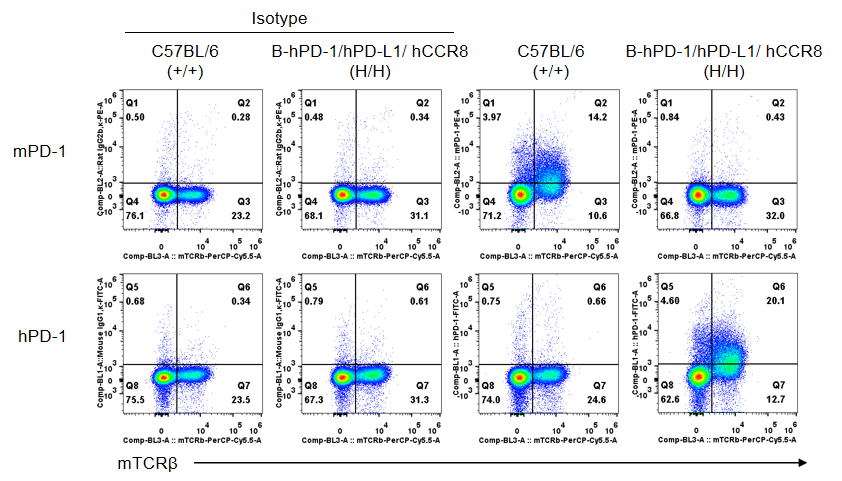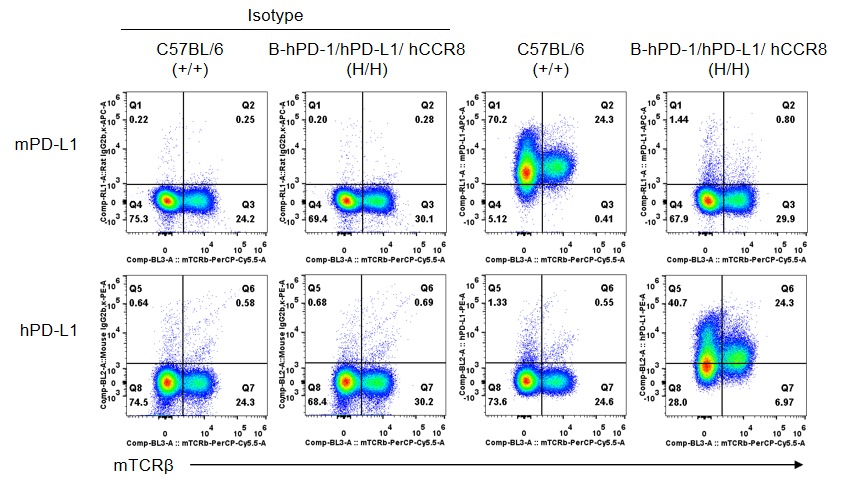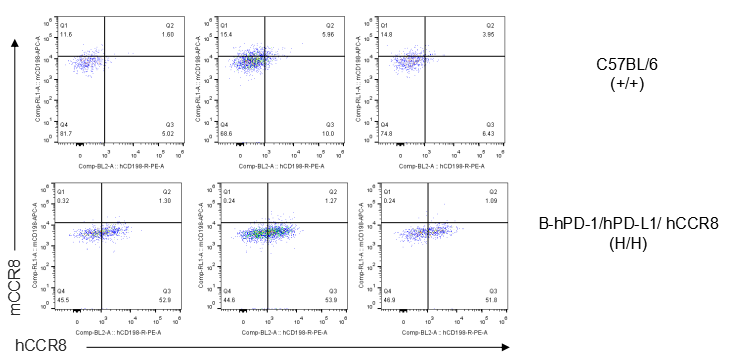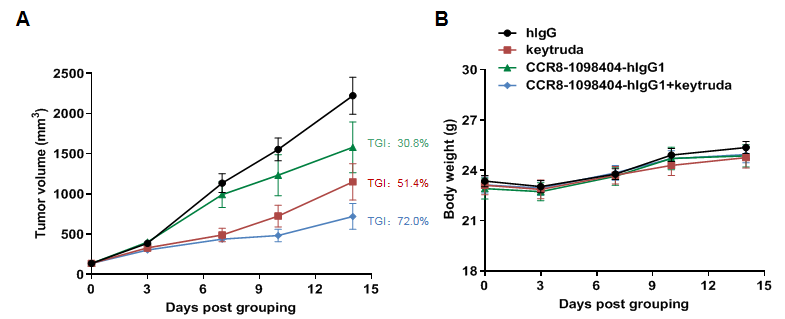B-hPD-1/hPD-L1/hCCR8 mice
| Strain Name |
C57BL/6-Pdcd1tm1(PDCD1)Bcgen Cd274tm1(CD274)Bcgen Ccr8tm1(ccr8)Bcgen/ Bcgen |
Common Name | B-hPD-1/hPD-L1/hCCR8 mice |
| Background | C57BL/6 | Catalog number | 131764 |
|
Related Genes |
PDCD1 (PD1; PD-1; CD279; SLEB2; hPD-1; hPD-l; hSLE1) CD274 (B7-H; B7H1; PDL1; PD-L1; hPD-L1; PDCD1L1; PDCD1LG1) CCR8 (CY6; TER1; CCR-8; CKRL1; CDw198; CMKBR8; GPRCY6; CMKBRL2; CC-CKR-8) |
||
Detection of m/hPD-1 protein expression by flow cytometry

Strain specific PD-1 expression analysis in wild-type C57BL/6 mice and homozygous B-hPD-1/hPD-L1/hCCR8 mice by flow cytometry. Splenocytes were collected from wild-type C57BL/6 mice and homozygous B-hPD-1/hPD-L1/ hCCR8 mice stimulated with anti-CD3ε in vivo (7.5 μg/mice, stimulation for 24 hours, i.p.). Mouse PD-1 was only detectable in wild-type mice. Human PD-1 was only detectable in homozygous B-hPD-1/hPD-L1/ hCCR8 mice.

Strain specific PD-L1 expression analysis in wild-type C57BL/6 mice and homozygous B-hPD-1/hPD-L1/hCCR8 mice by flow cytometry. Splenocytes were collected from wild-type C57BL/6 mice and homozygous B-hPD-1/hPD-L1/ hCCR8 mice stimulated with anti-CD3ε in vivo (7.5 μg/mice, stimulation for 24 hours, i.p.). Mouse PD-L1 was only detectable in wild-type mice. Human PD-L1 was only detectable in homozygous B-hPD-1/hPD-L1/ hCCR8 mice.

Strain specific analysis of CCR8 expression in B-hPD-1/hPD-L1/hCCR8 mice by FACS. MC38 cells were inoculated into wild-type C57BL/6 (+/+) and homozygous B-hPD-1/hPD-L1/hCCR8 mice (H/H). Tumors were harvested at approximately 500mm3, and the CCR8 were detect by flow cytometry. Mouse CCR8 was detectable on Treg cells of wild-type mice. Human CCR8 was detectable on Treg cells in homozygous B-hPD-1/hPD-L1/hCCR8 mice but not in wild-type mice.

Antitumor activity of anti-human PD-1 antibody combined with anti-human CCR8 antibody in B-hPD-1/hPD-L1/hCCR8 mice. (A) Anti-human PD-1 antibody (in house) combined with anti-human CCR8 antibody (in house) inhibited MC38 tumor growth in B-hPD-1/hPD-L1/hCCR8 mice. Murine colon cancer B-hPD-L1 MC38 plus cells were subcutaneously implanted into homozygous B-hPD-1/hPD-L1/hCCR8 mice (male, 8 week-old, n=6). Mice were grouped when tumor volume reached approximately 100 mm3, at which time they were treated with human PD-1 and human CCR8 antibodies in panel B. (B) Body weight changes during treatment. As shown in panel A, Combination of hPD-1 and hCCR8 antibodies were more efficacious in controlling tumor growth in B-hPD-1/hPD-L1/hCCR8 mice. B-hPD-1/hPD-L1/hCCR8 mice provide a powerful preclinical model for in vivo evaluation of anti-human PD-1 and CCR8 antibodies. Values are expressed as mean ± SEM.









